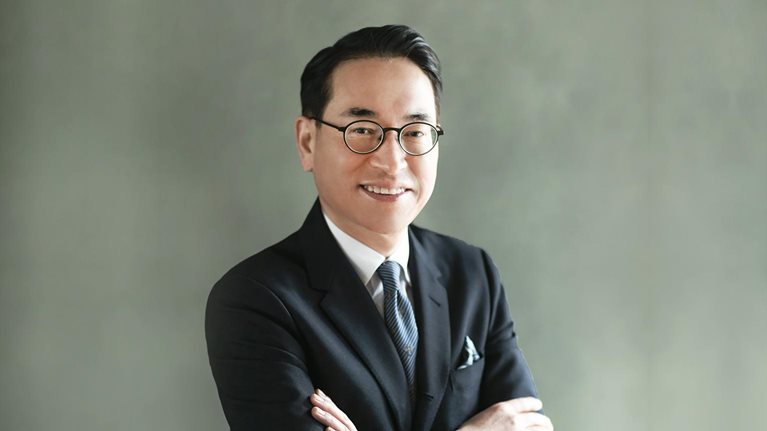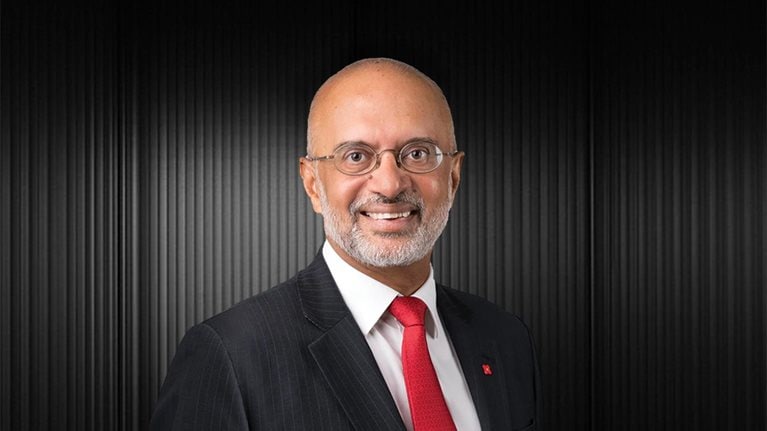Ping An is the archetypal example of how today’s Asian powerhouses succeed by creating, participating in, and exploiting digital ecosystems. Founded in 1988 as an insurance company in the then-rapidly developing city of Shenzhen, Ping An has since grown to become China’s largest non-State-owned conglomerate by revenue (1.169 trillion RMB [$174 billion] in 2019), with portfolio companies spanning automobile services, financial services, healthcare, and smart city solutions. Early investments in digital technologies such as artificial intelligence (AI), blockchain, and cloud infrastructure help Ping An serve more than 214 million retail customers and nearly 579 million internet users across China.
As chief information officer from 2013 to 2019, Jessica Tan was a key architect of Ping An’s digital-ecosystem-based business model. In an interview with McKinsey’s Jason Li and Joydeep Sengupta, Tan shared her thoughts on how the digital transformation will affect professional services, the synergies that big and small companies can share in digital ecosystems, and the ways in which she’s reimagining Ping An’s organizational structure and leadership selection criteria, starting from the company’s highest ranks.
The Quarterly: What impact are Chinese companies having on Asia and the rest of the world?
Jessica Tan: There are two areas where I see Chinese companies contributing. One is how to serve large volumes of consumers online. China has done incredibly well with the largest consumer market, from daily lifestyle services like ride-hailing to professional services like telemedicine and finance. Chinese companies have been at the forefront of pioneering successful business models and platforms. The second area relates to technology applications, particularly AI. AI needs three things to succeed: basic algorithms, computing power, and real data and scenarios. Large markets like China and the US are very ripe countries in which to develop AI applications and train AI technologies.
The Quarterly: Sounds like digital technology is a key theme. Has the COVID-19 pandemic reaffirmed Ping An’s approach to digitization?
Jessica Tan: We’ve always been very aggressive on the digitization front. Our founder [and chair], Peter Ma, has always been visionary. Ten years ago, when he said we should invest significantly in technology R&D above and beyond IT, it was not an easy decision to make. We now spend more than $1.7 billion of our revenue every year. Even though we never really know how technology will change, we think it’s important to have these capabilities.
If anything, COVID has taught us that we need to be even more aggressive. We have 1.5 million employees, and I had contingencies for around 20 percent of them to work remotely from home at any point in time. During Chinese New Year this year [when the pandemic was at its height in China and the government instituted lockdowns and restricted travels], I had five days to get all of them online.
One of our portfolio companies, OneConnect, is a fintech that serves financial institutions. Since COVID broke, it’s provided 60 banks with remote sales-management and customer-support tools, including an AI voice robot and a videoconferencing app. Before COVID, it could have taken a year to persuade them to sign up. But now, more people are aware that this is something we need to do.
At the same time, we’re part of the insurance industry, where face-to-face interaction is very important. We’ve always used digitization as support, and have our own video apps to do morning meetings and training remotely. But it’s not a sufficient sales-management tool. Our customers are not yet used to talking to us remotely, so our agents were actually back up and running very quickly. The leap to digital has to be done right.
The Quarterly: What about the rest of Ping An’s diverse portfolio of companies?
Jessica Tan: In our portfolio of tech companies providing healthcare, education, and smart city services, digital has spurred even more growth. There are eight billion telemedicine consultations across China every year. Only about 3 percent of visits were online. During COVID, traffic on our Good Doctor platform increased more than eight times; people didn’t want to go to hospitals.
This has changed three things: one, the consumer mindset. They no longer feel the need to go to hospitals for minor illnesses. Two, regulators’ behavior toward telemedicine. They didn’t allow social health insurance to reimburse telemedicine expenses, but they’ve released that restriction now. So now you see 400 internet hospitals booming in China with official blessing. Three, the standardization of the quality of healthcare in China. Our health scientists found that about 34 percent of all medical consultations can be done online without sacrificing quality, and in many case are made even better because everything done online is taped and recorded. There’ll be less deviation between doctors in cities and doctors in rural areas.
We’re working with the government, the hospitals, and doctors themselves on how to use technology to do their jobs better. There’s a scarcity of doctors in China; I can’t magically create ten million doctors overnight. We have, however, been working over the past five years to get our AI engine to look at 3,000 different diseases, identify all the symptoms associated with each of them, the clinical pathways that should be followed for each disease, and potential complications. A single doctor cannot memorize everything they learned in medical school, but a machine can never forget the relevant clinical pathways. The AI can surface the most relevant potential diagnoses, and human doctors can make the final judgement, which is what humans are best at. We’ve called this AI clinical decision support AskBob, and it’s being used by more than 430,000 doctors in China right now.
The Quarterly: Are there any obstacles to the spread of telemedicine?
Jessica Tan: There are three challenges. First are regulations, and understandably so. Telemedicine affects tons of people. How do you know that the 400 internet hospitals have qualified doctors and are not scams? It’s an ongoing process to get regulators comfortable. The second is the adoption mindset of consumers. COVID has helped many people of all ages reimagine what they can do online, but it’s still a process. Many consumers don’t want to pay for digital services, so more work needs to be done to make the model sustainable financially.
The final hurdle are the professionals themselves. It’s not just patients who need to accept it; doctors need to be comfortable with it. Many times, it’s the professionals who are most resistant to change. How do we help them embrace AI and assure them that AI is going to complement what they do, not replace them?
The Quarterly: What about Ping An’s organizational structure—does it need to be reimagined in light of all the customer-facing digital transformation?
Jessica Tan: We actually started the process a bit earlier. We’re changing the traditional pyramid structure. If you look at life insurance, for example, from the headquarters down to the regional level down to the agent, there are at least seven to ten layers. This is a very common, human-driven structure that made sense in an age where technology is only a support tool.
About a year ago, we started pushing a 4-D, or four-direct, transformation program. The idea is that the headquarters is a big brain that goes directly to the agent, and we can take out the many, many middle layers, where the sole purpose is to pass information. Anyone who’s played beer-drinking games knows that information gets lost at every channel. We’re trying to build analytics to help HQ be embedded in the front line, be it in sales, product, risk management, et cetera. You end up with an hourglass structure, with middle management functioning as coaches, not directors.
Another example is Ping An’s motor insurance, where we started a transformation in 2018 that reduced our ops team by 32 percent. It still enjoys 50 percent growth every year. In essence, we’ve more than doubled our productivity. We do this not because of cost, but to become more effective and leaner; we want fewer people but more experts as opposed to just having more bodies.
The Quarterly: You mentioned that managers would be more focused on coaching. What traits do you look for in your leadership team?
Jessica Tan: We recently revamped our management evaluation criteria, adding a set of attributes. We used to select our management team based on three characteristics: the ability to think, execute, and lead teams. These are hard skills, if you will. Last year, we added six other attributes that are much softer skills. This is very important, particularly in an environment like Ping An’s, which is very aggressive. We’re now looking at things like a person’s adversity quotient, and their ability to be open and receptive. This is something we started with our top 150 people in senior management that will eventually trickle down to the rest of the organization. It’s a shift that has to happen, especially because so much technology innovation is cross-discipline and requires the collaboration of different teams. It’s more and more important for people to be able to work with other people. That sounds very simple, but it’s a huge change because these softer factors are hard to measure.
The Quarterly: Digital has also empowered Ping An’s ability to cross over into new sectors. Can you describe the strategy here?
Jessica Tan: We look at three things with an ecosystem in mind. First is, what’s most important to the economy? How can we contribute? Second is, what’s most important to our customers? After all, we’re a consumer company with 214 million retail customers and nearly 579 million internet users. Third is, where is our competitive strength? Whatever business we enter, we have to be in the top three, so we need to look at our unique strengths that will allow us to play well in that particular ecosystem. On a macro level, these three things don’t change much.
We constantly upgrade our competitive strengths. In the healthcare ecosystem, some companies may look at the short term and focus on making their money from selling drugs or medication. We don’t look at it that way. We want to be a long-term healthcare player, and to do that we have to look at the whole healthcare ecosystem. We have Good Doctor on the consumer front, yes, but we also work with hospitals and doctors to empower them. It’s a tedious job, but we do it because if you want to get through to the whole healthcare ecosystem, you have to be able to touch all eight million people in the industry. So we created a platform called HealthKonnect, which looks at managing healthcare costs for insurance companies. Our competitiveness will improve as the structure of the industry changes.
The final hurdle are the professionals themselves . . . who are most resistant to change. How do we help them embrace AI and assure them that AI is going to complement what they do, not replace them?
The Quarterly: Does M&A have a role to play in driving innovation, productivity, and resilience at Ping An?
Jessica Tan: Yes, we’re always hoping for M&A opportunities to accelerate our progress or strengthen capabilities instead of us building these capabilities ourselves. That said, I tell our teams that we shouldn’t wait for M&A to be successful. Once we’ve chosen to do something, we will do it, whether or not it’s via an M&A opportunity. Of our 11 tech businesses, Autohome, our online platform for car owners, was the only one that we acquired and didn’t grow organically. We had launched a similar project, but closed it after two years. While it was the right industry to enter, companies like Autohome had been in for about a decade. So we decided to wait for the right opportunity to buy Autohome.
If you’re a smart investor, buying is not the end of the process. Typically, when you buy a business at a reasonable price, they’re facing some bottlenecks in their growth. That was the case with Autohome, but we’ve grown it over the past four and a half years. Its market cap has increased by nearly four times. We didn’t just buy it and say that’s the end of the strategy. The acquisition is really just a seed. Autohome’s original business model was basically like the traditional yellow pages, but we incorporated it within our offline and dealer platforms and created new analytics platforms for manufacturers. We created a closed-loop system, where you can do both the research and the transaction online. Then we added other services: financing, secondhand cars, repair services. It’s now an integrated portal for users. So M&A is always a play as an opportunistic add-on, but it doesn’t replace all the hard work that you will still have to do.
The Quarterly: What about other forms of strategic partnerships and investments?
Jessica Tan: While we tend to make majority acquisitions in tech, we also make minority acquisitions. These are much looser alliances where we help them sell or use channels like OneConnect, our fintech platform. It’s already served more than 3,000 financial institutions in China and has an open API platform, which we’ve opened to other fintech players, some of whom we invest in as minority shareholders. Many small fintech players are not able to scale up distribution, sales, or customization. But they may have niche modules where they excel. Big companies like ours have the tenacity and longer-term view that help smaller players serve a wider breadth of customers. Especially in technology and machine learning, scale does matter because it creates a virtual cycle. We help plug smaller players into our ecosystems to help link them into the whole system.
We made the decision seven or eight years ago to go for the ecosystem strategy, to the point where we were actually cannibalizing our own business. Lufax, our first financial open marketplace, doesn’t sell just our products, it sells other people’s too. And OneConnect was controversial internally because we were taking core tech advantages on which we spend billions every year and providing them to the rest of the financial institutions and insurers. Today, 50 other insurers, or half the market, are using our auto-car-claims AI technology. But I think it’s the right strategy. If we’re stuck by ourselves in the narrowly defined financial-services sector, I think we would disappear within the next 100 years, because financial services is an intermediary. The ecosystem approach gives us a chance to become much more integrated with where the end-user demand is.
The Quarterly: Can you paint a picture of Asia, and China, in 2030? What’s the biggest change between now and then?
Jessica Tan: We’ll probably be spending even more time on our phones, or whatever new mobile device that would be. The second trend is the redefinition of industry. We’ve been sticking to the idea of primary, secondary, and tertiary industry, as well as sector definition, but lines are blurring. I think it’ll be much more around the value chain. Pieces of the value chain might aggregate different flows.
Third is the reimagination of services. When I studied economics in school, there were certain localized services like barbering or teaching that would never be affected by trade. But many of these services may actually be globalized. The previous round of globalization was more about the trade of physical goods. I believe the next wave is going to be about professional services that can cross borders. English teachers in Europe can teach kids remotely in Asia. Doctors could do that. Hopefully, that can help with the recalibration of supply imbalances.
The Quarterly: What about Ping An?
Jessica Tan: As a services company, our traditional business has been very much focused within China. We see an opportunity to expand our more tech-driven models overseas because they don’t require significant, in-depth local knowledge and the buildup of local resources, channels, customer preferences. We are interested in taking our technologies that have been successful in China and using them to enable others globally. Hopefully, this creates a more symbiotic relationship as opposed to the usual demonized caricature of big Chinese giants coming in to take your share. This kind of path would be more synergistic for us.


